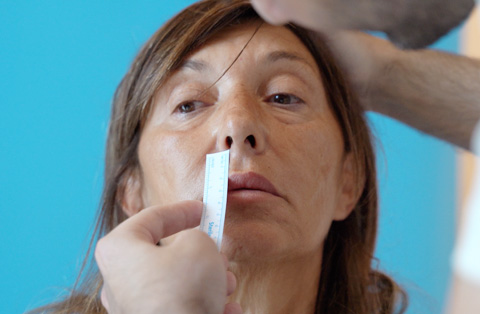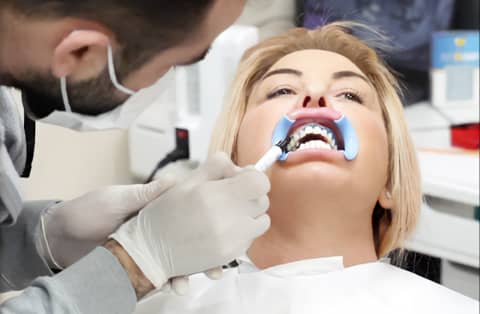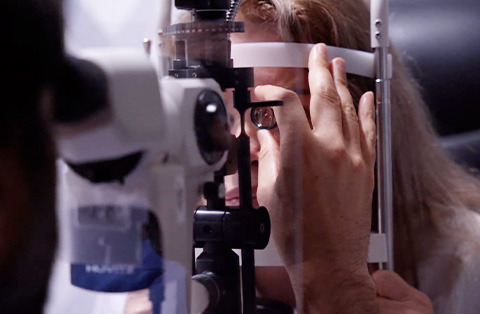Cataracts blurry vision and worsen with age, but treatment can restore clarity. Learn why they develop, who needs cataract surgery, and how to protect your eye health for a better quality of life.
Cataract Frequency Statistics by Age Groups
Cataracts, characterized by the clouding of the eye's lens, are a prevalent condition that increases with age. Data from the National Eye Institute (NEI) highlights this trend:
Ages 40-49: Approximately 2.5% of individuals are affected.
Ages 50-54: The prevalence rises to about 5.2%.
Ages 55-59: Around 9.1% experience cataracts.
Ages 60-64: The rate increases to 15.5%.
Ages 65-69: Approximately 24.7% are affected.
Ages 70-74: The prevalence reaches 36.5%.
Ages 75-79: About 49.5% have cataracts.
Ages 80 and above: A significant 68.3% are affected.
These statistics underscore the strong correlation between advancing age and the likelihood of developing cataracts. Notably, more than half of individuals aged 80 and above are impacted by this condition.
Causes of Cataracts & Risk Factors
Cataracts develop when proteins in the eye's lens break down and clump together, causing cloudiness. Aging is the primary cause, but other factors can contribute.
Common Causes
Aging: The most common cause due to natural changes in the eye’s lens.
Genetics: A family history of cataracts increases risk.
Diabetes: High blood sugar can damage the lens over time.
UV Radiation: Prolonged sun exposure can accelerate lens damage.
Smoking: Toxins contribute to oxidative stress in the eye.
Eye Injury or Surgery: Trauma can lead to early cataract formation.
Medications: Long-term use of steroids can increase risk.
Risk Factors
Age: The strongest risk factor, with prevalence rising after 40.
Lifestyle Choices: Smoking, excessive alcohol, and poor diet increase risk.
Health Conditions: Diabetes, hypertension, and obesity contribute.
Environmental Exposure: UV light and pollution can accelerate cataract formation.
Understanding these causes and risk factors helps with early detection and prevention strategies.
Symptoms of Cataracts
Cataracts develop gradually, causing vision changes over time. Symptoms may vary depending on the severity and location of the clouding in the lens.
Common Symptoms
Blurry or Cloudy Vision: Objects appear hazy or out of focus.
Increased Light Sensitivity: Bright lights may cause discomfort or glare.
Difficulty Seeing at Night: Vision worsens in low-light conditions.
Faded or Yellowed Colors: Colors may appear dull or less vibrant.
Halos Around Lights: A glowing ring may appear around light sources.
Frequent Prescription Changes: Glasses or contact lenses may need updates more often.
Double Vision in One Eye: A single object may appear as two overlapping images.
These symptoms may worsen over time, affecting daily activities such as reading, driving, or recognizing faces.
How Does Age Affect Our Eye Health?
As we age, the structure and function of our eyes change, increasing the risk of vision problems. Many age-related conditions develop gradually, affecting clarity, focus, and overall eye health.
Common Age-Related Eye Changes
Reduced Pupil Size: The muscles controlling the pupil weaken, allowing less light into the eye, making it harder to see in dim lighting.
Decreased Tear Production: The eyes produce fewer tears, leading to dryness and irritation.
Loss of Lens Flexibility: The lens becomes less flexible, causing presbyopia (difficulty focusing on close objects).
Increased Risk of Eye Diseases: Aging raises the likelihood of conditions like cataracts, glaucoma, and macular degeneration.
Changes in Color Perception: The lens may yellow over time, making it harder to distinguish colors.
Regular eye exams help detect age-related changes early, allowing for better management and treatment options.
When Should I See a Doctor?
Regular eye exams are essential, but certain symptoms may require immediate medical attention. Early diagnosis can prevent vision loss and improve treatment outcomes.
Sudden Vision Changes: Blurriness, double vision, or loss of vision.
Increased Light Sensitivity: Discomfort in bright environments.
Frequent Prescription Changes: Needing new glasses or contacts often.
Difficulty with Daily Activities: Trouble reading, driving, or recognizing faces.
Halos Around Lights: Seeing rings around light sources.
Eye Pain or Redness: Persistent discomfort or inflammation.
If any of these symptoms occur, schedule an eye exam promptly. Early detection and treatment can help maintain clear vision. Schedule an appointment now!
Cataract Treatment Options
Cataracts worsen over time, but treatment can restore vision. The approach depends on the severity of symptoms and their impact on daily life.
Non-Surgical Management
Updated Prescription Glasses: Helps improve vision in early stages.
Brighter Lighting: Reduces glare and enhances clarity.
Anti-Glare Lenses: Minimizes light sensitivity.
Magnifying Lenses: Assists with reading and close-up tasks.
Surgical Treatment
When cataracts significantly affect vision, cataract surgery is the only effective solution.
Cataract Surgery: The clouded lens is removed and replaced with an artificial intraocular lens (IOL).
Types of Surgery:
Phacoemulsification: Uses ultrasound to break up and remove the lens.
Extracapsular Cataract Extraction (ECCE): Removes the lens in one piece (used for advanced cases).
Recovery: Most patients regain clear vision within weeks.
Surgery is safe and highly effective, with a high success rate in restoring vision.
Should Every Cataract Patient Have Surgery?
Not every cataract patient needs surgery. The decision depends on the severity of symptoms and how much they affect daily life.
When Surgery May Not Be Necessary
Mild Symptoms: If vision is only slightly affected, glasses, brighter lighting, or magnifying lenses may help.
No Impact on Daily Activities: If reading, driving, or other tasks are not difficult, surgery can be delayed.
Health Conditions: Some patients with other medical issues may not be good candidates for surgery.
When Surgery Is Recommended
Severely Blurred Vision: If cataracts make it hard to see clearly.
Difficulty Performing Daily Tasks: Struggling with reading, driving, or recognizing faces.
Increased Light Sensitivity: Experiencing significant glare or halos.
An eye doctor will assess the patient’s condition and recommend surgery if needed. Regular eye exams help determine the right time for treatment.





